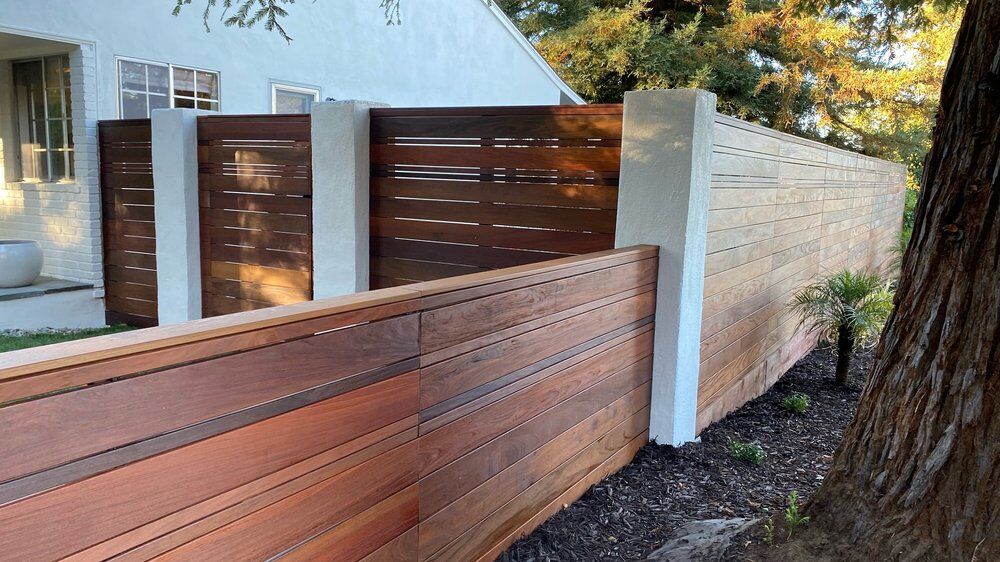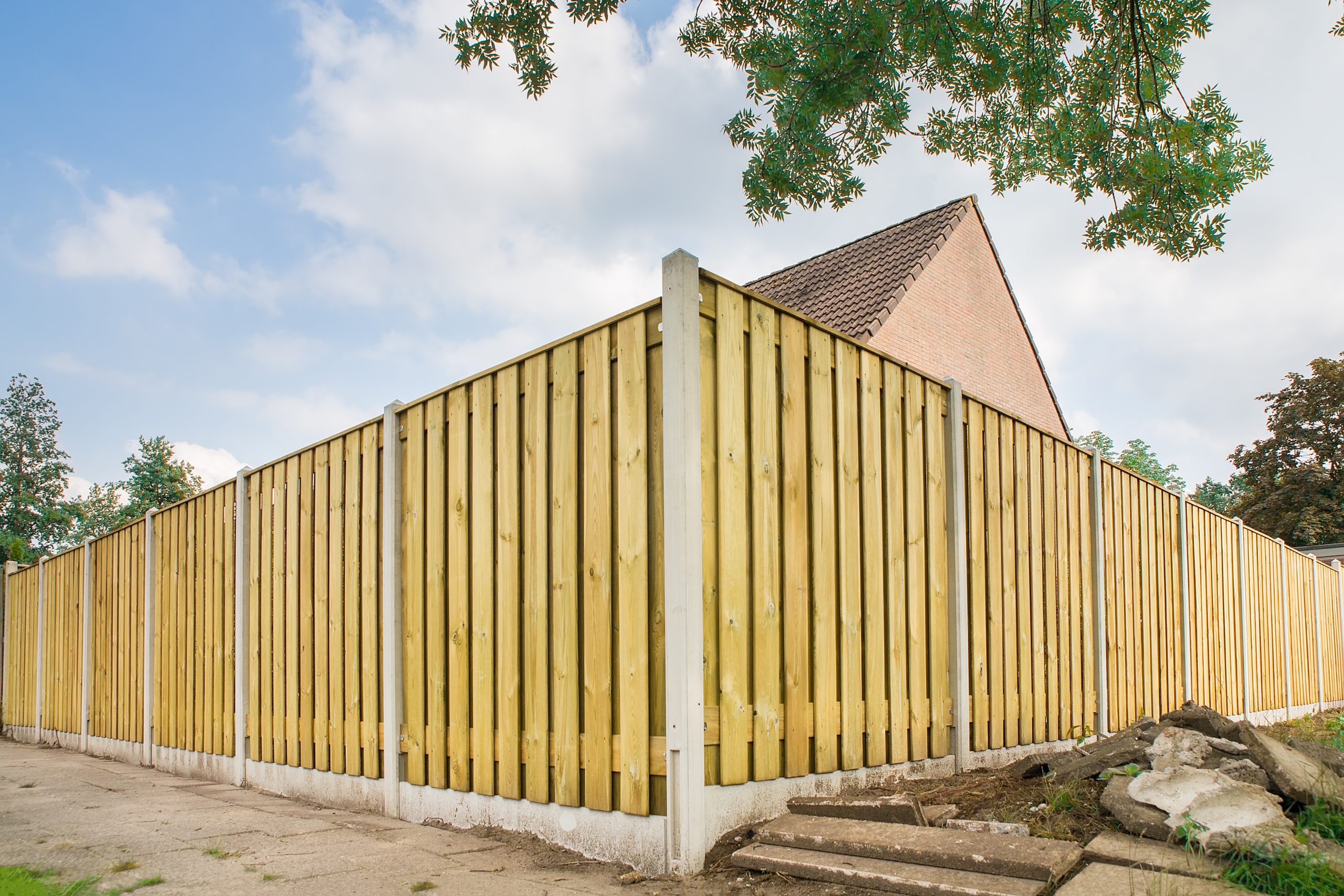All Categories
Featured
When it pertains to keeping a wooden fence, house owners often deal with the decision of whether to discolor or paint. Both choices have their pros and cons, and the selection ultimately depends upon your visual choices, the sort of wood, and just how much maintenance you're eager to dedicate to. Below's a detailed comparison to help you make a notified decision.
The Essentials of Painting and Discoloration
Paint involves covering the wood with an opaque layer of color. It offers total insurance coverage, hiding the timber grain while offering superb security versus ecological components.
Tarnishing passes through the timber, improving its natural appeal while adding a safety layer. Relying on the kind, spots can range from transparent to solid, allowing differing levels of wood grain visibility.
Pros and Disadvantages of Paint
Pros:
Vast Array of Colors: Repaint deals endless color options, enabling you to match your fencing to your home's outside or personal style.
Longer Enduring: Premium outside paint can last as much as 5-7 years, needing much less constant reapplication.
Superior Defense: Paint types a thick, solid obstacle versus moisture, UV rays, and bugs.
Cons:
Peeling Off and Cracking: With time, paint can crack or peel, specifically in areas with extreme climate condition.
Hides Natural Wood Charm: If you love the all-natural grain of wood, paint may not be the most effective choice.
Greater Maintenance: Repainting needs scraping off the old paint, which can be labor-intensive.
![]()
Advantages And Disadvantages of Discoloration
Pros:
All-natural Look: Discolorations preserve and improve the all-natural appeal of the wood, making it ideal for top quality timber like cedar or redwood.
Much Easier to Reapply: Unlike paint, stains do not peel or fracture. Reapplying tarnish usually requires less surface area preparation.
Flexible End Up Alternatives: Discolorations can be found in clear, semi-transparent, and solid ranges, offering various levels of protection.
Disadvantages:
![]()
Much Shorter Life-span: Stains, semi-transparent and especially transparent ones, may need reapplication every 2-3 years.
Limited Color Choices: While discolorations provide natural tones, they lack the broad shade palette offered with paint.
Less Protective: Spots penetrate the timber but do not supply as thick an obstacle as paint, making them a little less protective versus extreme weather.
Elements to Think About
Aesthetic Preferences: If you want lively colors and total protection, paint is the way to go. For a rustic and all-natural look, select tarnish.
Wood Type: Top quality woods with attractive grains profit from staining, while lower-grade woods can be painted for a sleek appearance.
![]()
Environment: In humid or wet environments, paint's thicker barrier may provide far better defense. In modest or completely dry climates, stains can be enough.
Upkeep Commitment: Paint entails less frequent reapplication but even more initiative throughout touch-ups. Staining needs regular maintenance but is simpler to manage.
Final Thoughts
Both painting and staining can efficiently shield and enhance your wooden fencing. The finest alternative depends upon your top priorities, whether they lean towards aesthetic appeals, sturdiness, or ease of upkeep. By recognizing the advantages and downsides of each, you can select the surface that aligns with your needs and guarantees your fencing remains a standout attribute of your residential or commercial property for years to come.
The Essentials of Painting and Discoloration
Paint involves covering the wood with an opaque layer of color. It offers total insurance coverage, hiding the timber grain while offering superb security versus ecological components.
Tarnishing passes through the timber, improving its natural appeal while adding a safety layer. Relying on the kind, spots can range from transparent to solid, allowing differing levels of wood grain visibility.
Pros and Disadvantages of Paint
Pros:
Vast Array of Colors: Repaint deals endless color options, enabling you to match your fencing to your home's outside or personal style.
Longer Enduring: Premium outside paint can last as much as 5-7 years, needing much less constant reapplication.
Superior Defense: Paint types a thick, solid obstacle versus moisture, UV rays, and bugs.
Cons:
Peeling Off and Cracking: With time, paint can crack or peel, specifically in areas with extreme climate condition.
Hides Natural Wood Charm: If you love the all-natural grain of wood, paint may not be the most effective choice.
Greater Maintenance: Repainting needs scraping off the old paint, which can be labor-intensive.

Advantages And Disadvantages of Discoloration
Pros:
All-natural Look: Discolorations preserve and improve the all-natural appeal of the wood, making it ideal for top quality timber like cedar or redwood.
Much Easier to Reapply: Unlike paint, stains do not peel or fracture. Reapplying tarnish usually requires less surface area preparation.
Flexible End Up Alternatives: Discolorations can be found in clear, semi-transparent, and solid ranges, offering various levels of protection.
Disadvantages:

Much Shorter Life-span: Stains, semi-transparent and especially transparent ones, may need reapplication every 2-3 years.
Limited Color Choices: While discolorations provide natural tones, they lack the broad shade palette offered with paint.
Less Protective: Spots penetrate the timber but do not supply as thick an obstacle as paint, making them a little less protective versus extreme weather.
Elements to Think About
Aesthetic Preferences: If you want lively colors and total protection, paint is the way to go. For a rustic and all-natural look, select tarnish.
Wood Type: Top quality woods with attractive grains profit from staining, while lower-grade woods can be painted for a sleek appearance.

Environment: In humid or wet environments, paint's thicker barrier may provide far better defense. In modest or completely dry climates, stains can be enough.
Upkeep Commitment: Paint entails less frequent reapplication but even more initiative throughout touch-ups. Staining needs regular maintenance but is simpler to manage.
Final Thoughts
Both painting and staining can efficiently shield and enhance your wooden fencing. The finest alternative depends upon your top priorities, whether they lean towards aesthetic appeals, sturdiness, or ease of upkeep. By recognizing the advantages and downsides of each, you can select the surface that aligns with your needs and guarantees your fencing remains a standout attribute of your residential or commercial property for years to come.
Latest Posts
Why Barebones Furniture's Mattress Return Plan Sticks Out
Published Apr 04, 25
1 min read
A Fresh Restroom Look with Bathroom Fitter in City Detroit
Published Apr 04, 25
1 min read
Streamline Your Life with Elegant Shower Wall Surfaces
Published Apr 04, 25
1 min read